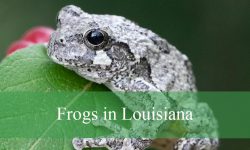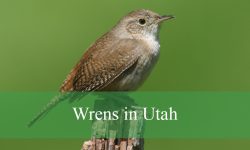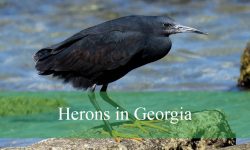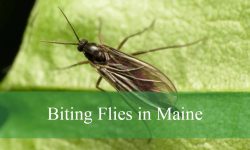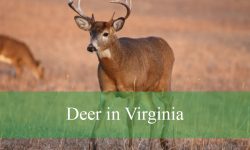Across Ohio, you can encounter black squirrels, which are simply the dark-colored variant of the familiar eastern gray squirrel (Sciurus carolinensis). These distinctive animals have intrigued biologists, ecologists, and nature enthusiasts for decades. Their glossy black coats and agile movements make them easily recognizable and have sparked a mixture of curiosity and admiration among residents across the state.
In this article, we explore black squirrels in Ohio in detail, focusing on their physical characteristics, behavior, diet, reproduction, habitat, and the role they play in the local ecosystem.
Physical Characteristics and Identification
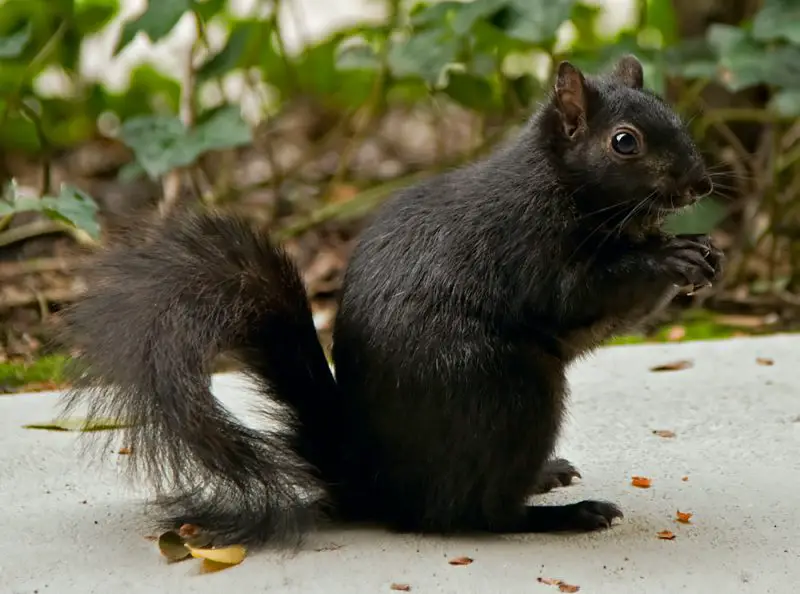
Black squirrels in Ohio are genetically similar to gray squirrels, differing primarily in coloration. Their coats are rich black due to melanism, a genetic trait that increases eumelanin production. Unlike albino squirrels, which lack pigment entirely, black squirrels’ fur is dense and can sometimes have hints of brown or silver under certain lighting, especially on the belly or tail. Their fur provides excellent insulation during Ohio’s harsh winters and may offer slight camouflage advantages in shaded forest environments.
These squirrels have the same slender body structure as eastern gray squirrels, with a long bushy tail, sharp claws for climbing, and large, expressive eyes that aid in predator detection. Adult black squirrels typically range from 18 to 22 inches in total length, including the tail, and weigh between 14 and 21 ounces. Males and females are similar in size, making sexual dimorphism subtle in this species. Juveniles are smaller, with shorter tails and a slightly less lustrous coat that darkens as they mature.
Identification in the field is straightforward due to their striking black coat, though care must be taken in areas where gray and black squirrels coexist, as hybrids with mixed coloration can occur. The tail is particularly prominent, often appearing as a thick plume that helps with balance during rapid movements and acts as a visual signal to other squirrels.
Behavior and Daily Activity
Black squirrels exhibit behavior similar to gray squirrels, though some subtle differences have been observed. These animals are diurnal, with peak activity during the early morning and late afternoon. They spend a significant portion of their day foraging for food, grooming, and interacting socially with other squirrels. Their social structure is loosely hierarchical, with dominant individuals often controlling access to the most desirable feeding areas, such as oak and hickory trees abundant in Ohio.
These squirrels are highly agile and can leap between branches with precision. They use vocalizations and tail flicks to communicate danger or territorial intentions. Interestingly, some observations suggest black squirrels may be bolder around humans than their gray counterparts, approaching feeding areas with less hesitation, which may contribute to their successful urban adaptation.
Caching is a critical behavioral trait. Black squirrels are meticulous about burying nuts and seeds in numerous hidden locations to ensure a stable food supply during winter. They possess excellent spatial memory, often returning to these caches months later. This behavior not only supports their survival but also benefits forest regeneration, as forgotten seeds can germinate.
Diet and Feeding Habits
The diet of black squirrels is highly varied and adapts to seasonal availability. Their primary foods include acorns, walnuts, hickory nuts, seeds, berries, and fungi. In urban and suburban Ohio, they often exploit bird feeders, discarded human food, and ornamental plantings. The ability to switch between natural and human-provided food sources contributes to their widespread presence in towns and cities.
During spring and summer, black squirrels consume leafy vegetation, buds, and flowers, supplementing their nutrient intake. In winter, they rely heavily on cached nuts and seeds. Unlike some other rodents, black squirrels do not hibernate, making these food stores essential for survival during months of scarcity. Their feeding patterns also influence local plant communities, as buried seeds may grow into new trees or shrubs.
Reproduction and Life Cycle
Black squirrels follow a reproductive pattern similar to eastern gray squirrels, with two primary breeding seasons per year: late winter (January–February) and mid-summer (June–July). Females typically give birth to 2–6 young after a gestation period of about 44 days. Nesting sites are commonly found in tree cavities or leaf nests (dreys), which provide safety from predators and harsh weather conditions.
Juvenile squirrels are born blind and hairless, gradually developing fur and mobility over the first few weeks. By 10–12 weeks, they are capable of leaving the nest and foraging independently. Black squirrels reach sexual maturity at approximately one year of age, allowing populations to grow rapidly under favorable conditions. Survival rates vary based on food availability, predation, and disease.
Courtship behaviors involve chasing, vocalizations, and gentle sparring among males. Females may mate with multiple males during a season, increasing genetic diversity within the population. These reproductive strategies, combined with adaptability in habitat use, contribute to the resilience of black squirrel populations in Ohio.
Habitat and Distribution in Ohio
Black squirrels are remarkably adaptable, occupying both forested and urban environments. In Ohio, they are frequently observed in deciduous woodlands, city parks, college campuses, and suburban neighborhoods. Trees such as oaks, hickories, maples, and walnuts provide essential food resources, while the dense canopy offers shelter from predators and weather extremes.
Urban adaptation is particularly notable. Black squirrels often exploit human structures for nesting and shelter, utilizing attics, chimneys, and sheds. Towns like Kent, Wooster, and Cleveland Heights are renowned for their thriving black squirrel populations. Kent State University, in particular, serves as a well-documented example of successful introduction and establishment, where black squirrels have become a celebrated feature of campus wildlife.
Population densities vary by location. In areas with abundant food and limited predation, black squirrels can make up 60–70% of the local squirrel population. Conversely, in more rural or predator-rich environments, their numbers may be lower.
Predators and Survival Strategies
Despite their adaptability, black squirrels face natural predators, including hawks, owls, foxes, and domestic cats. Their dark coloration may provide some camouflage in shadowed environments, though it may also make them more conspicuous in open spaces. Vigilance and agility are their primary survival tools.
Behavioral strategies such as rapid darting between trees, freezing when threatened, and using elevated vantage points to detect predators enhance survival rates. Urban environments provide additional protection, as large predators are less common, which partly explains the high density of black squirrels in cities and campuses across Ohio.
Ecological Role and Importance
Black squirrels are vital contributors to Ohio’s ecosystems. By consuming and storing nuts, they aid in seed dispersal, facilitating forest regeneration and maintaining plant diversity. Their presence supports predator populations, forming an essential component of the local food web.
Additionally, black squirrels influence human perceptions of wildlife. Their striking appearance encourages community interest in conservation and fosters appreciation for urban and suburban biodiversity. Their coexistence with humans in Ohio exemplifies how adaptable wildlife can thrive alongside urban expansion.
Cultural and Symbolic Significance
In Ohio, black squirrels are more than just a biological curiosity—they have become cultural icons. Kent State University embraces the black squirrel as an unofficial mascot, symbolizing resilience and adaptability. Local festivals and online communities celebrate their presence, highlighting their role in shaping Ohio’s identity and natural heritage.
Communities often take pride in these unique squirrels, featuring them in local art, school mascots, and promotional materials. This cultural significance emphasizes the deep connection between residents and the natural world surrounding them.
Conservation and Future Outlook
Black squirrels currently face no major threats at the species level, but localized challenges such as urban development, habitat fragmentation, and vehicle collisions can impact populations. Conservation efforts in Ohio focus on maintaining green corridors, planting native trees, and educating the public about coexistence with urban wildlife.
The future of black squirrels in Ohio appears promising. Their ability to exploit both natural and urban environments ensures continued presence, while growing public interest in their conservation supports habitat preservation and sustainable coexistence.
Observing Black Squirrels in Ohio
For nature enthusiasts and casual observers alike, Ohio offers many opportunities to observe black squirrels. Parks, college campuses, and suburban neighborhoods provide excellent viewing locations. Early mornings and late afternoons are the best times for observation, as squirrels are most active during these periods. Observers should maintain a respectful distance to avoid disturbing nesting sites or feeding behavior.
Notable hotspots include Kent State University, Wooster, Cleveland Heights, and various metro parks throughout the state. Photography enthusiasts can capture remarkable images of their glossy coats and dynamic behaviors, while ecologists can study their adaptation strategies in urbanized landscapes.
Conclusion
Black squirrels in Ohio are a remarkable example of wildlife adaptability and genetic variation. Their striking appearance, intricate behaviors, and ecological contributions make them an integral part of the state’s biodiversity. Understanding their characteristics, feeding habits, reproductive patterns, and habitat preferences allows for a deeper appreciation of these fascinating creatures. As Ohio continues to balance urban development with wildlife conservation, black squirrels serve as a living reminder of nature’s resilience and the importance of protecting the ecosystems that sustain diverse species.
FAQs About Black Squirrels in Ohio
What are black squirrels?
Black squirrels are a melanistic form of the eastern gray squirrel (Sciurus carolinensis), characterized by their glossy black fur caused by a genetic variation called melanism. This pigment adaptation does not change their size or behavior compared to gray squirrels.
Are black squirrels a different species?
No, they are not a separate species. They are the same species as gray squirrels but carry a recessive allele that results in their black coloration. They can interbreed with gray squirrels, producing offspring with varied fur colors.
Where can black squirrels be found in Ohio?
They are commonly found in urban areas, city parks, college campuses, and forested regions. Notable populations exist at Kent State University, Wooster, and Cleveland Heights, where they thrive in both natural and human-modified environments.
How can you identify a black squirrel?
Identification is based on their shiny black fur, bushy tails, medium size (18–22 inches long including tail), and agile movements. Juveniles may have slightly lighter coats, but adults are easily distinguishable from gray squirrels.
What do black squirrels eat?
Their diet includes nuts, seeds, fruits, fungi, and occasionally human food from bird feeders or trash. They actively cache nuts and seeds in multiple locations, which helps them survive harsh Ohio winters and contributes to local forest regeneration.
When do black squirrels breed?
Black squirrels breed twice a year: in late winter (January–February) and mid-summer (June–July). Females give birth to 2–6 young per litter. The young are born blind and hairless, developing fur and mobility over the first few weeks.
How do black squirrels survive Ohio winters?
They survive using dense fur for insulation, stored food caches, and nesting in tree cavities or leaf nests (dreys). Their adaptability allows them to endure cold temperatures and snow-covered landscapes.
Are black squirrels endangered?
No, black squirrels are not endangered. While localized threats such as urban development and habitat loss can affect populations, their adaptability ensures stable numbers in many Ohio communities.
Why are black squirrels significant in Ohio?
They play an important ecological role in seed dispersal and serve as prey for predators like hawks and foxes. Culturally, they are celebrated, especially at Kent State University, where they serve as an unofficial mascot.
Can black squirrels live in urban environments?
Yes, they thrive in urban areas, taking advantage of parks, residential neighborhoods, and human structures for shelter and food. Their boldness around humans often gives them an edge over other wildlife in cities.

